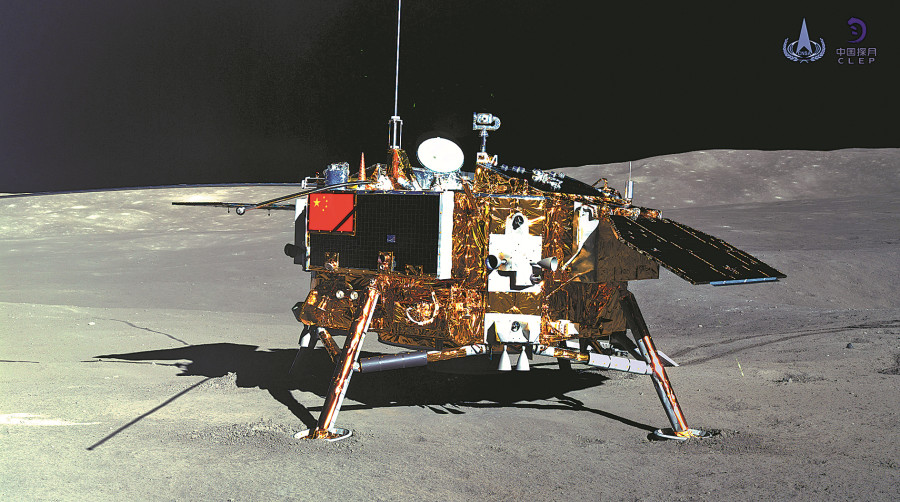China's Chang'e-4 probe resumes work for 16th lunar day
The lander and rover of the Chang'e-4 probe have resumed work for the 16th lunar day on the far side of the moon after "sleeping" during the extremely cold night.
The lander and rover of the Chang'e-4 probe have resumed work for the 16th lunar day on the far side of the moon after "sleeping" during the extremely cold night.

Photo taken by the rover Yutu 2 (Jade Rabbit-2) on Jan. 11, 2019 shows the lander of the Chang'e 4 probe. [Photo/Xinhua/China National Space Administration]
Both the lander and rover are in normal working order, the Lunar Exploration and Space Program Center of the China National Space Administration said on Thursday.
The rover, Yutu-2 or Jade Rabbit-2, has survived more than 400 Earth days and traveled 405.44 meters on the far side of the moon,
The Chang'e-4 probe, launched on Dec. 8, 2018, made the first-ever soft landing on the Von Karman Crater in the South Pole-Aitken Basin on the far side of the moon on Jan. 3, 2019.
A lunar day equals 14 days on Earth, and a lunar night is the same length. The Chang'e-4 probe switches to dormant mode during the lunar night due to the lack of solar power.
Yutu-2 has worked much longer than its three-month design life, becoming the longest-working lunar rover on the moon.
The rover has helped scientists unveil the secrets buried deep under the surface on the far side of the moon, enriching human's understanding about the history of celestial collision and volcanic activities and shedding new light on the geological evolution on the moon.
The scientific tasks of the Chang'e-4 mission include conducting low-frequency radio astronomical observation, surveying the terrain and landforms, detecting the mineral composition and shallow lunar surface structure and measuring neutron radiation and neutral atoms.
The Chang'e-4 mission embodies China's hope to combine wisdom in space exploration with four payloads developed by the Netherlands, Germany, Sweden and Saudi Arabia.
China will continue its lunar exploration program, with the Chang'e-5 lunar probe, weighing about 8.2 tonnes, expected to be launched in 2020 to bring lunar samples weighing 2 kg back to Earth.

